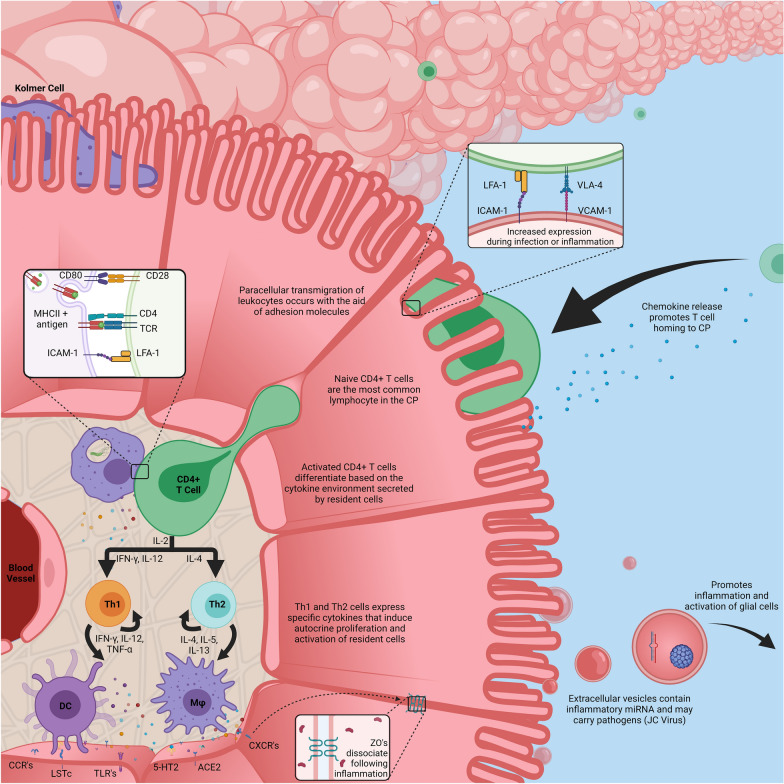Fig. 2.
An illustration of the choroid plexus, receptors, and resident immune cells. Three distinct immune cells can be found within the CP–dendritic cells, macrophages, and CD4 + T cells. Kolmer cells can be found adhering to the apical surface of the epithelium. CD4 + T cells are seen to constantly surveil both the CP and CSF, and regular traverse the barrier bidirectionally through the aid of adhesion molecules. The CP epithelium express many receptors and can be activated by resident immune cells, pathogens, or circulating cytokines from the periphery. Dendritic cells and macrophages phagocytize pathogens and present antigens to naïve T-cells. This allows for differentiation of CD4 + T cells into Th1 or Th2 dependent upon the current cytokine environment. The epithelial cells can release chemokines in the stroma and CSF. This can alter the CSF composition and promotes homing of peripheral immune cells to and from the CSF. The epithelial cells can also release extracellular vesicles into the CSF that contain inflammatory miRNA and potentially pathogens. Created with BioRender.com

